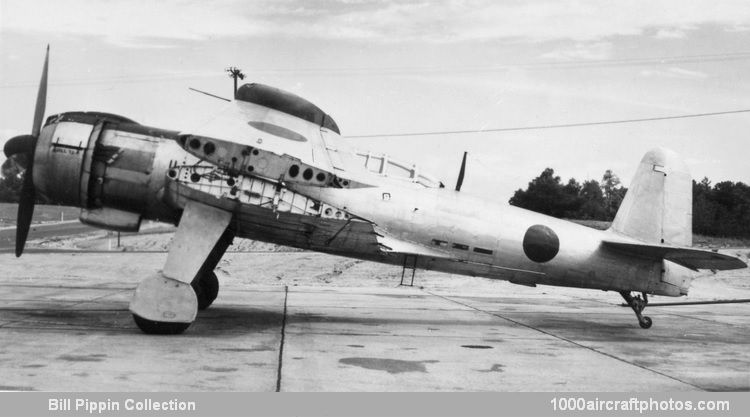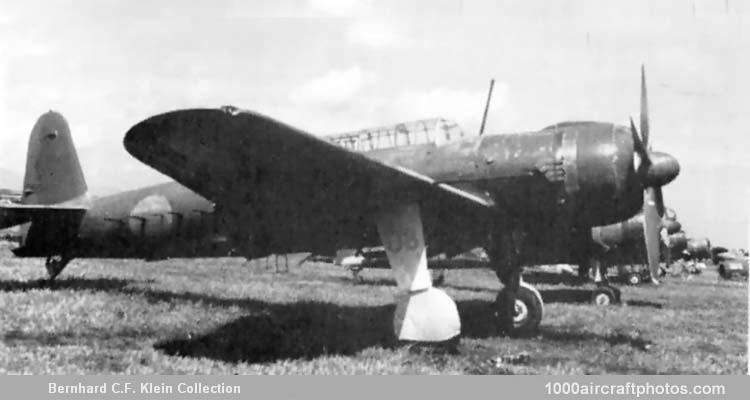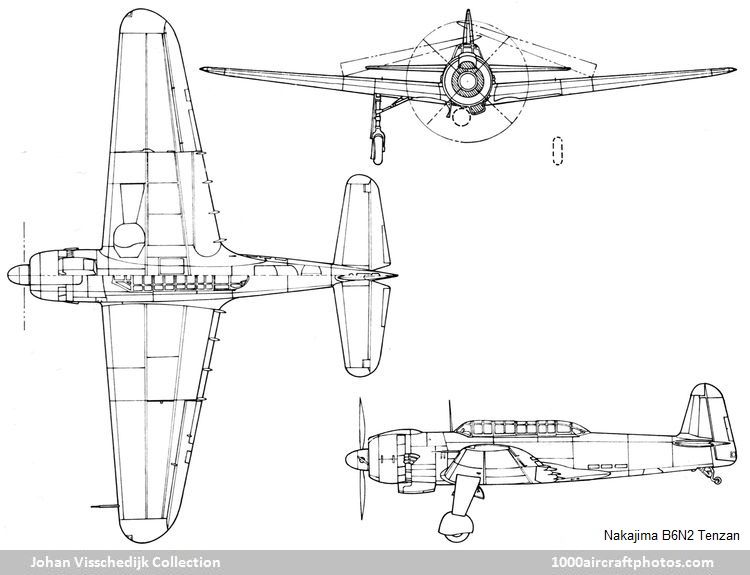Of all-metal construction with fabric covered control surfaces, the B6N introduced no major aerodynamic improvements over the B5N, the increase in performance being achieved by the use of an engine offering some 80% more power than the Sakae 11 in the B5N2. In spite of a considerable increase in all-up weight, Matsumura was constrained by carrier stowage restrictions to use a wing with approximately the same span and area as that of the older aircraft.
The major external difference lay in the design of the vertical tail surfaces which on the B5N were swept forward to keep the aircraft's length within the limit of 36 ft 1.1 in (11.00 m) imposed by the size of the deck elevators. The Navy insisted on powering the aircraft with a Mitsubishi Kasei engine, but Matsumura elected to use the new 1,870 hp Nakajima Mamoru 11 fourteen-cylinder air-cooled radial as it had lower fuel consumption and a better growth potential. With this power plant installed the first two prototypes were readied for flight trials in the spring of 1941.
The war against the Allies had not yet started and the Japanese Navy was confident that the B6N1 would be ready to replace the B5N2 in the near future. Unfortunately, early flight test reports indicated that the design suffered from serious engineering defects. The most urgent modification affected the vertical tail surfaces which had to be rotated 2º 10' to the left to correct directional stability problems stemming from the powerful torque of the four-blade propeller. After this modification the aircraft displayed markedly improved flying characteristics, but teething troubles, particularly with the Mamoru engine, slowed its development.
By the end of 1942 the Navy Experimental 14-Shi Carrier Attack Bomber was considered ready for carrier acceptance trials, but when the aircraft was tested aboard the Ryuho and the Zuikaku the mounting of its arrester hook proved weak, and the aircraft was involved in several landing mishaps. In early 1943, with the hook mounting strengthened, the B6N1, although requiring the use of RATOG (Rocket Assisted Take off Gear) units for take off at maximum gross weight, completed its carrier acceptance trials successfully.
After more than two years of testing, the type was finally accepted for production as the Navy Carrier Attack Bomber Tenzan (Heavenly Mountain) Model 11. The production aircraft introduced several modifications dictated by the result of the flight trials. The principal modifications included:


